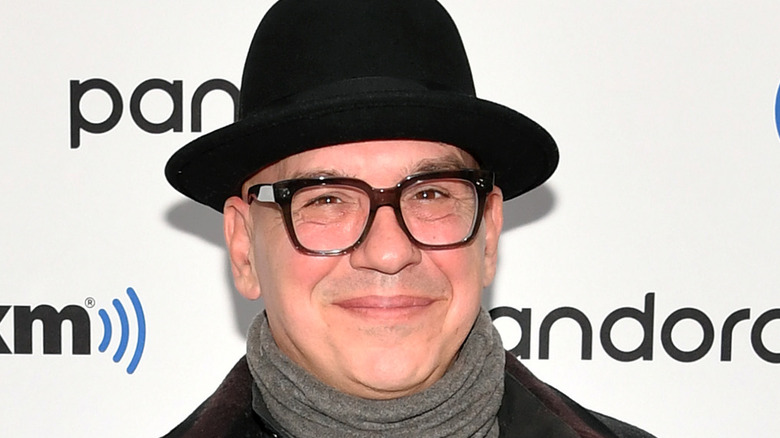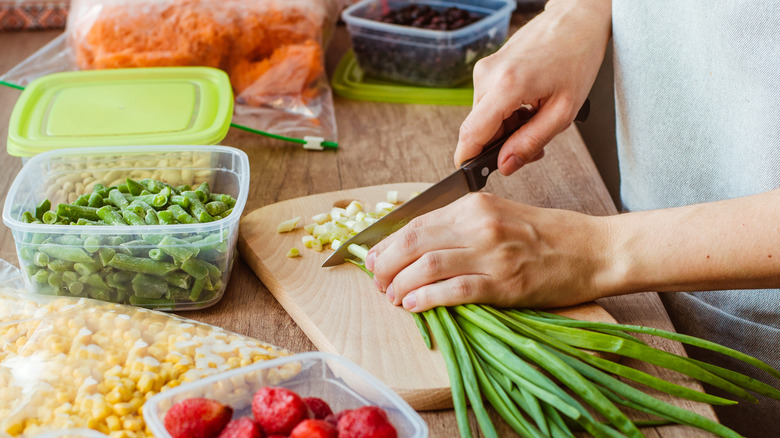Why Michael Symon Says Wood Cutting Boards Are Safer Than Plastic Ones
There are a few ongoing food debates that likely won't be solved in our lifetime: Burger King vs. McDonald's, pancakes vs. waffles, smooth vs. crunchy peanut butter, to name a few. But there's one question that's particularly contentious for home chefs: plastic or wooden cutting boards? The celebrity chef and Food Network host Michael Symon recently weighed in on the topic, perhaps hoping to help settle this debate once and for all. Judging from his response to one Twitter user announcing their preference for plastic cutting boards, Symon appears to solidly be on team wood. "Actually wood naturally kills bacteria .. some great articles on it .. I feel safer than plastic," Symon wrote.
While the wood vs. plastic cutting board debate still might be far from settled, many people seem to agree with Symon that wood is the superior choice. According to a study published in the Journal of Food Protection, wood cutting boards were shown to have fewer bacteria than plastic ones, with much of the harmful bacteria being absorbed within three to 10 minutes of use. So although some people may fear that the porous wooden material may be more likely to harbor bacteria than plastic, that is not the case.
Some people recommend having two cutting boards
While no studies have shown that plastic cutting boards are unsafe, they are typically less durable than wooden ones. Plastic is more prone to sustaining scratches and grooves, which are perfect places for bacteria to seep in, meaning they have to be replaced more often to ensure they are sanitary. However, some cooks still feel that plastic is overall still more hygienic, since they can be cleaned at high temps, so you may not want to get rid of all your plastic cutting boards just yet. Some people do prefer them for preparing raw meat, fish, and other foods that could harbor potentially deadly bacteria, such as salmonella.
One common solution is to simply have multiple cutting boards: one designated specifically for raw meat, and one for other, ready-to-consume foods. It's still best to wash everything with soap and warm water after use, and allow the board to dry completely. This will help ensure no nasty harmful bacteria has the chance to grow. But no matter which type of cutting board you use, Consumer Reports notes it's also very important to replace your boards once they start to become worn out and scarred.

